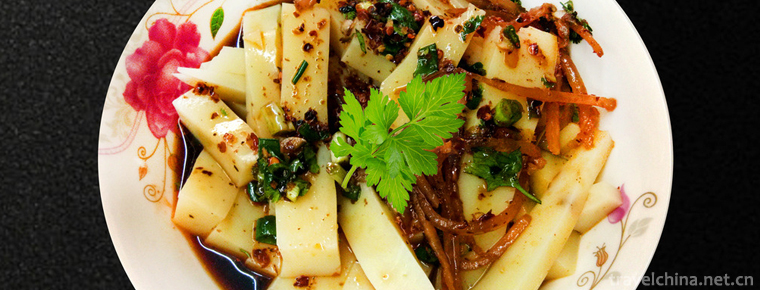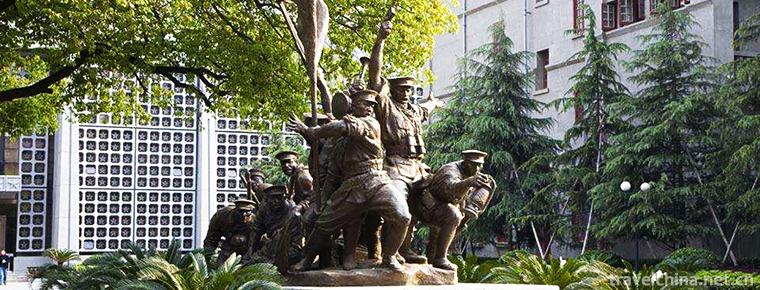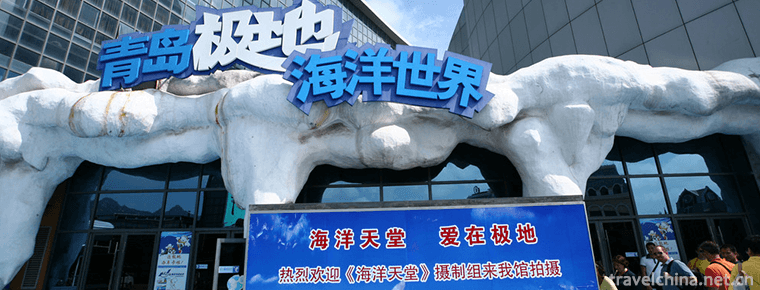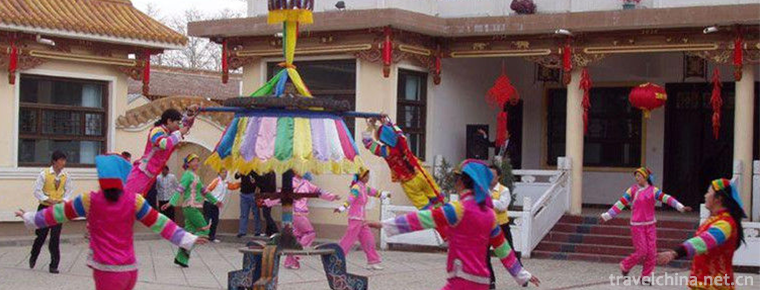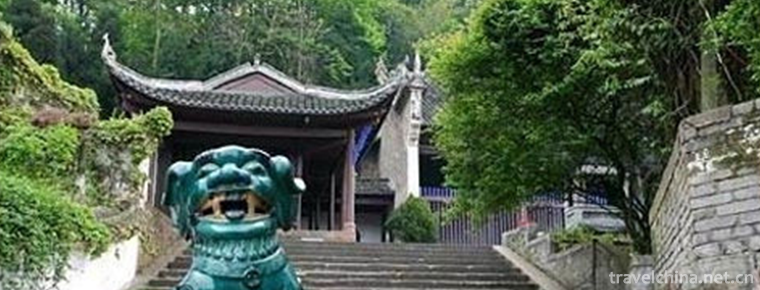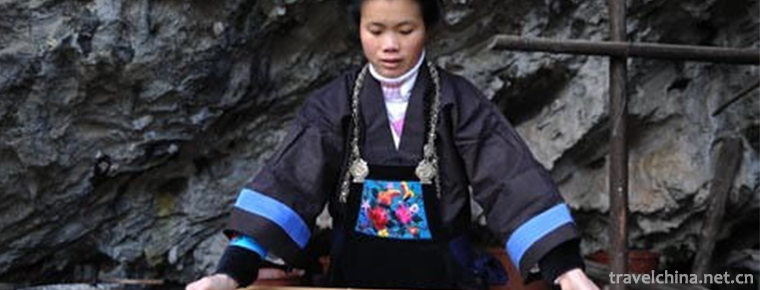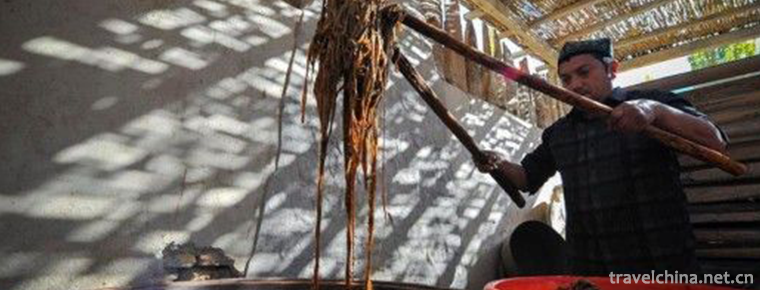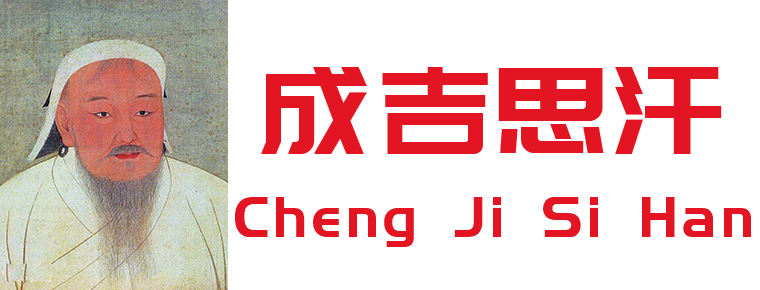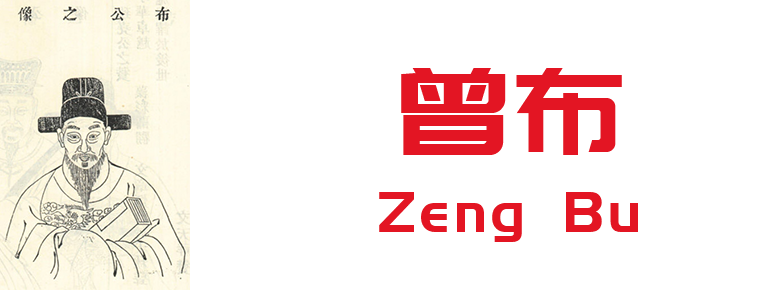Jingyuetan National Scenic Area
Jingyuetan, National AAAAA Class Tourist Scenic Spot, National Scenic Spot, National Forest Park, National Civilized Scenic Spot Demonstration Site, National Water Conservancy Scenic Spot, National National Outdoor Sports Base.
Jingyuetan Scenic Area is located in Chunjingyue Economic Development Zone, southeast Minister of Changchun City, Jilin Province. It is only 18 kilometers away from the People's Square in the center of the city. The area of the scenic area is 96.38 square kilometers. The area of the water area is 5.3 square kilometers, and the forest coverage rate is over 96%. Jingyuetan Lake is named for its meniscus shape. It is a sister pool with Taiwanese Riyuetan Lake. It is one of the "Eight Sceneries of Jilin" and is known as "Jingyuetan Shenxiu".
Jingyuetan Lake was the first water source for Changchun City in 1934, which was constructed artificially. It was called "water source" or "water storage pond" in the period of occupation. The name of Jingyuetan was created by Zheng Yu, the second son of Zheng Xiaoxu, Prime Minister of Manchuria and then director of the Capital Construction Bureau of Manchuria. The forests in the scenic area are constructed artificially and contain a complete forest ecological system of 30 tree species. They have unique geographical advantages, making them "a pure land in a noisy city". They have the reputation of "Asia's largest artificial forest sea", "Green Sea Pearl", "Urban Oxygen Bar". They are the ecological green core and city card of Changchun City.
Jingyuetan scenic spot is full of scenery, and the four seasons are different. The largest man-made forest in Asia is related to mountains and rivers, which forms the picture of the changing seasons of Jingyuetan Lake. Jingyuetan has become an ideal place for spring, summer, autumn and winter.
Jingyuetan is not only an eco-leisure center, but also a sports fitness center. As the main venue of Changchun Summer Festival and Changchun Ice and Snow Festival, Jingyuetan International Skiing Festival, Jingyuetan Forest Marathon, Jingyuetan Mountain Bicycle Marathon, Jingyuetan Forest Orienteering Race, Jingyuetan Dragon Boat Race and other events and activities have been carried out successively. We are committed to advocating a healthy, fashionable and leisure lifestyle and creating an international gathering place for well-known tourism and cultural activities.
Jingyuetan is located in Jingyue National High-tech Industrial Development Zone, southeast of Changchun City, Jilin Province. It is 14 kilometers from the People's Square in the city center, 16 kilometers from Changchun Station and 28 kilometers from Changchun Longjia International Airport.
Geographical coordinates are 125 degrees East 21 minutes and 43 degrees north 52 minutes.
topographic features
Jingyuetan is located in the front platform of Changbai Mountains, which belongs to the transition zone from the foot of Changbai Mountains to the western grassland. It spans three flora of Changbai Mountains, Inner Mongolia and North China, and its forest coverage is over 96%. The scenic spot is between 220 meters and 406.5 meters above sea level. The topography varies from north to south. The topography in the north is quite undulating. The topography in the south is relatively flat and open. The undulating mountains stretch into vertical and horizontal valleys, surrounded by a pool of blue water like a crescent moon.
Jingyuetan Lake is a low hilly terrain with 119 peaks and sizes. There are 86 mountains extending from north to south to the edge of the lake. It not only has ravines and mountains, but also has a bird's eye view of the lake. The whole mountain is like a python winding, of which Dajia Mountain is still the highest elevation.
Climatic characteristics
Jingyuetan Lake is located in the temperate semi-humid monsoon climate zone, with the highest temperature of 28.32 C and the lowest temperature of - 22.48 C. The average temperature in winter is about 10-18 degrees below zero. The average annual precipitation is 654.3 mm, and the depth of snow cover in winter is about 30 cm. The content of negative oxygen ion in forest is 100 times higher than that in urban area.
development history
In 1932, after acquiring the Manchurian Railway Affiliated Land in Changchun, the Japanese invading army found that the Fengshijun government at that time had a tight control over the water source in Changchun, which made the water source of the Manchurian Railway Affiliated Land very tense. After the establishment of the Puppet Manchukuo, the Puppet Manchukuo Capital Construction Bureau, assisted by the "Manchu Railway", immediately investigated the water sources in Changchun and found deep groundwater about 100 meters underground.
The hilly terrain below Xinli City and the largest river in the region is Yitong River. There are no mountains and reservoirs on both sides of the Yitong River. All the tributaries suffer from narrow and shallow conditions. Only the rivers along the Zihe River do not dry up all the year round. In 1934, after comparing water quality, water quantity and cost, the Puppet State Capital Construction Bureau finally decided to build a dam at a place called Yao Station 12 kilometers southeast of Changchun to intercept the water along the Zihe River.
In May 1934, the water storage project was started and water supply began in January 1936. The daily water supply capacity of this reservoir is 40,000 cubic meters, which exceeds the water purification capacity of Nanling Water Purification Plant by 20,000 cubic meters. The 4.6-square-kilometer reservoir was later named "Jingyuetan".
However, due to the small amount of rivers along the sub-rivers, the water supply of Puppet State Capital is urgent in five years, and only the backup water source of Huanglong Park Reservoir (intercepting three runoffs in the upper reaches of Xihegou, the tributary of Yitong River, and now Changchun Nanhu Lake) can be used. In the last two years of Puppet State Capital, the Yitong River water intercepted by Xiaobanqiao sluice of Nanling Waterworks will be used as the main water supply Source. In 1958, with the completion of Xinlicheng Reservoir, the Yitong River began to supply water to Nanling Waterworks after regulating the flow of the Reservoir, and Jingyuetan was changed to the reserve water source of Changchun City.
Honors
In 1988, Jingyuetan was approved as a national scenic spot by the State Council.
In 1989, it was approved as National Forest Park by the State Forestry Administration.
In 1995, the administrative committee of Jingyuetan Tourism Economic Development Zone in Changchun was established. Jingyuetan National Forest Park was positioned on urban forest eco-tourism, and the infrastructure construction of scenic spots was strengthened.
In April 1999, Changchun Jingyuetan Tourism Development Group Co., Ltd. was established.
In 2001, it was rated as a national 4A tourist attraction, which has passed ISO9002 national quality management system certification and ISO14001 international environmental management system certification.
On March 15, 2003, the Vasa Ski Festival in Jingyuetan was officially established in Changchun, China.
In February 2009, it was awarded the title of "National Civilized Scenic Spot" by the Central Civilization Office, the Ministry of Construction and the National Tourism Administration.
On January 14, 2011, it was officially awarded "National AAAAA Class Tourist Scenic Spot" by the National Tourism Administration.
On December 31, 2012, "Jingyuetan" was awarded as a well-known trademark in China.
In April 2012, it was awarded "the first batch of national standardized service demonstration units" by the National Tourism Administration.
In August 2012, it was awarded "National Outdoor Sports Base for National Fitness" by the State General Administration of Sports.
In 2013, the All-China Federation of Trade Unions identified it as "the vanguard of workers".
In June 2014, the Vasa International Skiing Festival in Jingyuetan officially joined the World loppet Sports Organization.
In July 2014, it was appraised as "the outstanding contribution unit of the National Sunshine Sports Congress" by the State General Administration of Sports, the Ministry of Education and the Central Committee of the Communist Youth League.
In November 2014, Jingyuetan was rated as one of the top ten excellent sports tourism scenic spots in China.
In December 2014, Jingyuetan was named a famous service enterprise in Jilin Province.
In February 2017, Jingyuetan was awarded the National Sports Industry Demonstration Unit by the State General Administration of Sports.
In July 2017, the Vasa International Skiing Festival in Jingyuetan was awarded the first batch of national sport tourism events.
In December 2017, the Vasa International Skiing Festival in Jingyuetan was awarded the top ten Chinese brand festivals in the exhibition industry in 2017.
In December 2017, the Vasa International Skiing Festival in Jingyuetan was awarded the top ten most influential ice and snow tourism festivals in China.
Myths and legends
Legend has it that one year, the seven daughters of the Queen Mother went to the world to play. Her seventh daughter, the Seven Fairies, saw a young man carrying a broken umbrella and wiping tears as she walked. She became a village maid and they loved to live together at first sight. The Queen Mother was very angry when she learned about this. She decided to send Tianbing Tianjun to capture the seven fairies. On that day, the sky suddenly overcast, and a strong wind blew the seven fairies into the sky. Looking at the hut where she and her lover lived, the seven fairies could not help falling two lines of tears, one drop in the south, into Taiwan's Sun Moon Lake, one drop in the north, into Changchun's Jingyue Lake.
Opening Hours
Opening hours of scenic spots: 6:00-21:00. Open to the outside world all year round and sell tickets all day.
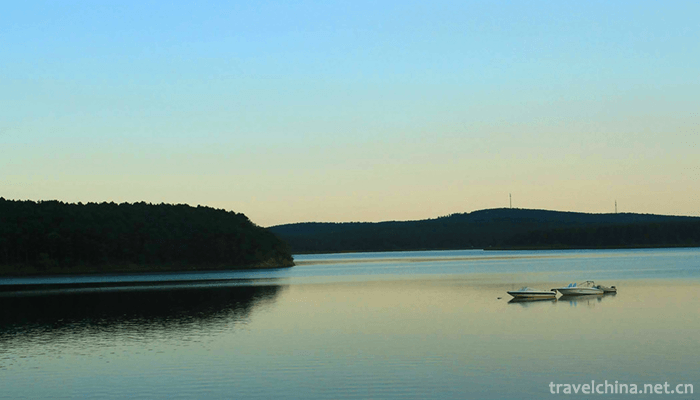
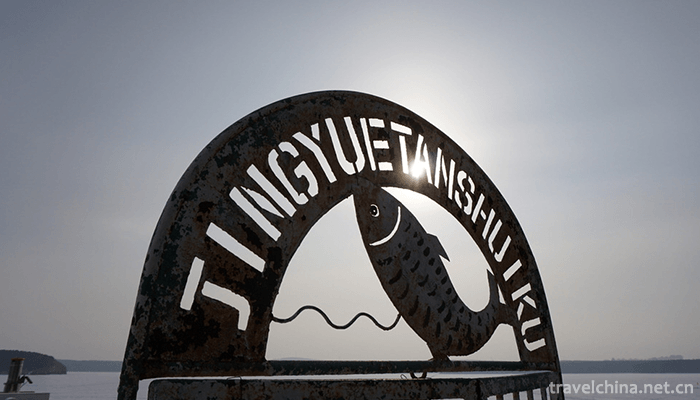
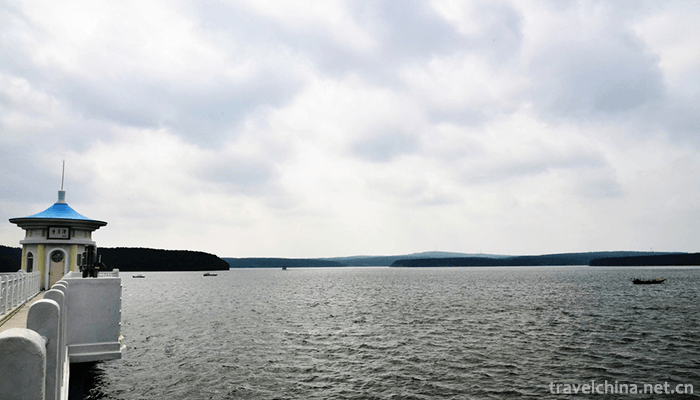
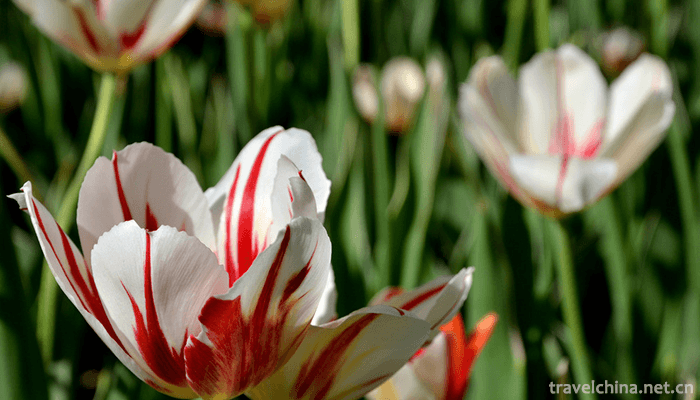
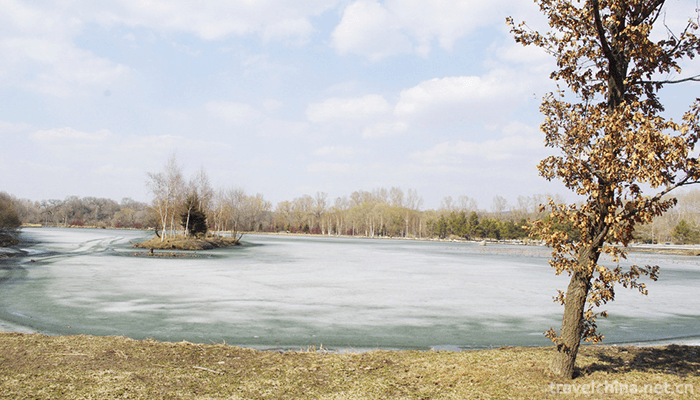

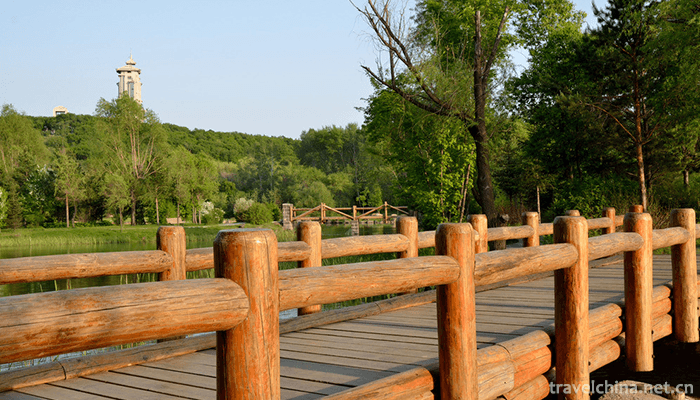
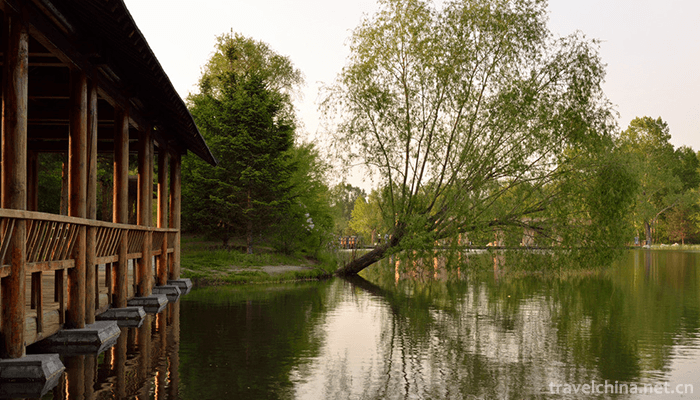

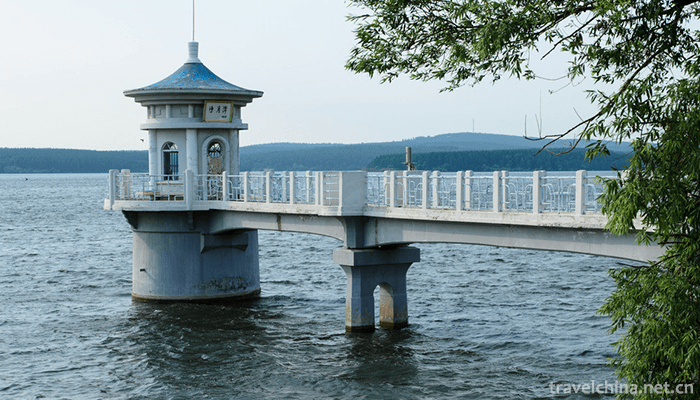

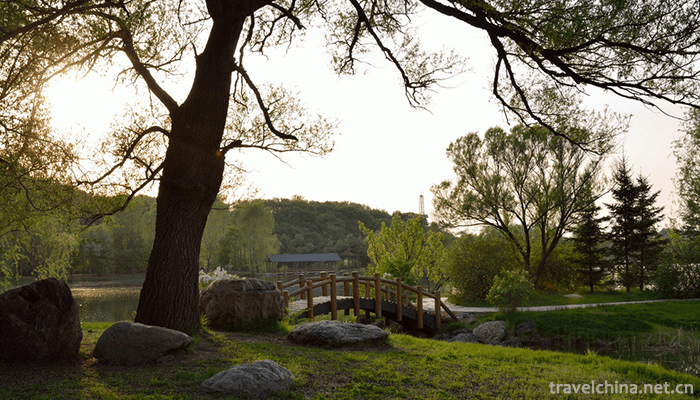
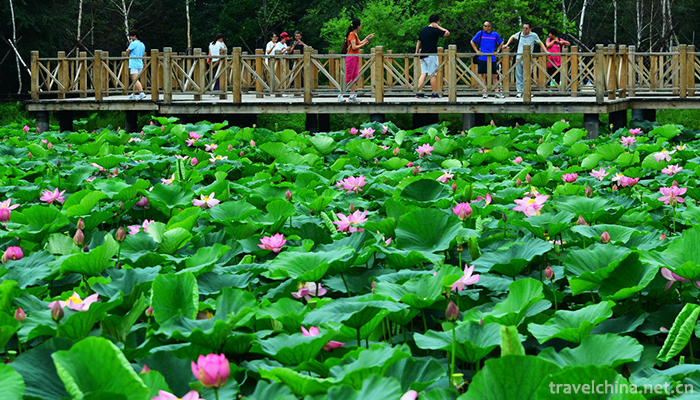
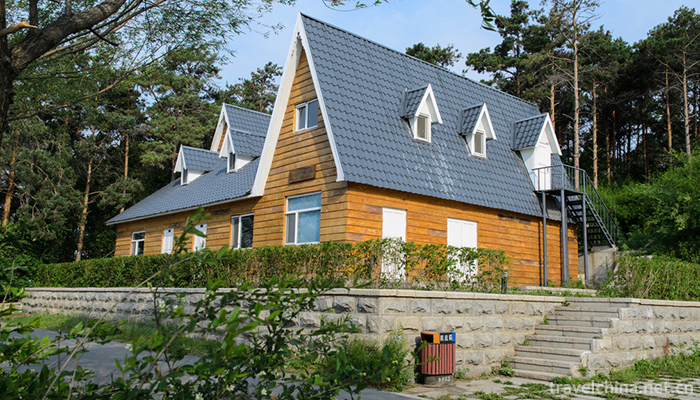
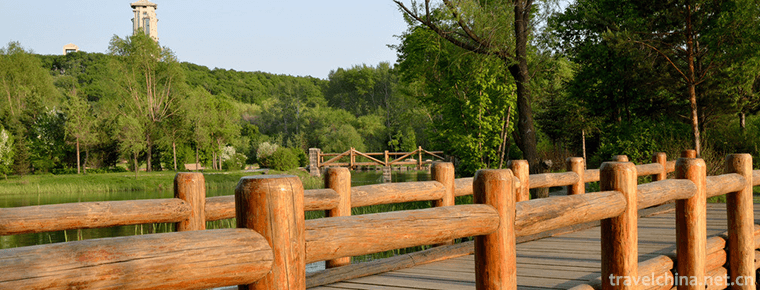
Jingyuetan National Scenic Area
-
Sad cold Bean jelly
Sad cold Bean jelly Heartbroken jelly is a famous snack in Zhou Li Town.
Views: 194 Time 2018-10-12 -
Bayi Memorial Hall in Nanchang
The Bayiyi Memorial Hall in Nanchang was established in 1956 and officially opened to the outside world on October 1, 1959. In 1961, it was announced by the State Council as the first batch of key nat
Views: 186 Time 2018-12-31 -
Qingdao Polar Ocean World
Qingdao Polar Marine World is located at 60 Donghai East Road, Laoshan District, Qingdao City, Shandong Province. It is a large marine world complex integrating leisure
Views: 250 Time 2019-02-07 -
Yasuaki
Anzhao is an ancient Tu dance. It's popular with mutual aid. When celebrating festivals, harvest celebrations and weddings, people gather in the courtyard or on the wheat threshing ground to dance the
Views: 207 Time 2019-04-02 -
Construction Techniques of Luling Traditional Dwellings
The traditional wooden structure construction technique is an ancient traditional handicraft of the Han nationality. The traditional architecture of the Han nationality is a building system with woode
Views: 292 Time 2019-05-15 -
Panhu Legend
Panhu and Xinnu myths and legends are abbreviated as Panhu legends. They originated in Luxi County, Xiangxi Tujia and Miao Autonomous Prefecture, Hunan Province. They are the main contents of Panhu cu
Views: 245 Time 2019-06-08 -
Leather Paper Making Skills
Leather paper making is an ancient Chinese traditional handicraft. Paper making is one of the four great inventions in ancient China. Bamboo paper and leather paper made from bamboo and tussah bark ar
Views: 106 Time 2019-06-09 -
Uygur Mulberry Paper Making Skills
Uygur mulberry paper takes mulberry branch endothelium as raw material, mulberry branch endothelium is sticky, smooth and delicate, easy to process, after exploitation, soaking, pot boiling, pounding,
Views: 150 Time 2019-06-28 -
Genghis Khan Cheng Ji Si Han
He was a Jin Jin. He was from May 31, 1162 to August 25, 1227. Yeke Mongghol Ulus Khan, outstanding in world history. Politician , Militarist
Views: 163 Time 2019-09-07 -
Zeng Bu
Zeng bu (November 3, 1036 - August 21, 1107), Zi Zi Xuan, Tai Chang, son of Yi Zeng, brother Zeng Gong of Zhong Shu Shu, the Prime Minister of the Northern Song Dynasty, and the important supporter of
Views: 167 Time 2019-09-15 -
Honorary title of Mianyang
National system to promote comprehensive innovation reform pilot area
Views: 341 Time 2020-12-14 -
Topography and geomorphology of Suining
Suining is a hilly and low mountain area in the central part of Sichuan Basin, with simple geological structure and gentle fold. The landform type is single, belonging to the Mesozoic Jurassic strata, which is eroded, cut and accumulated by flowing water
Views: 129 Time 2020-12-16
